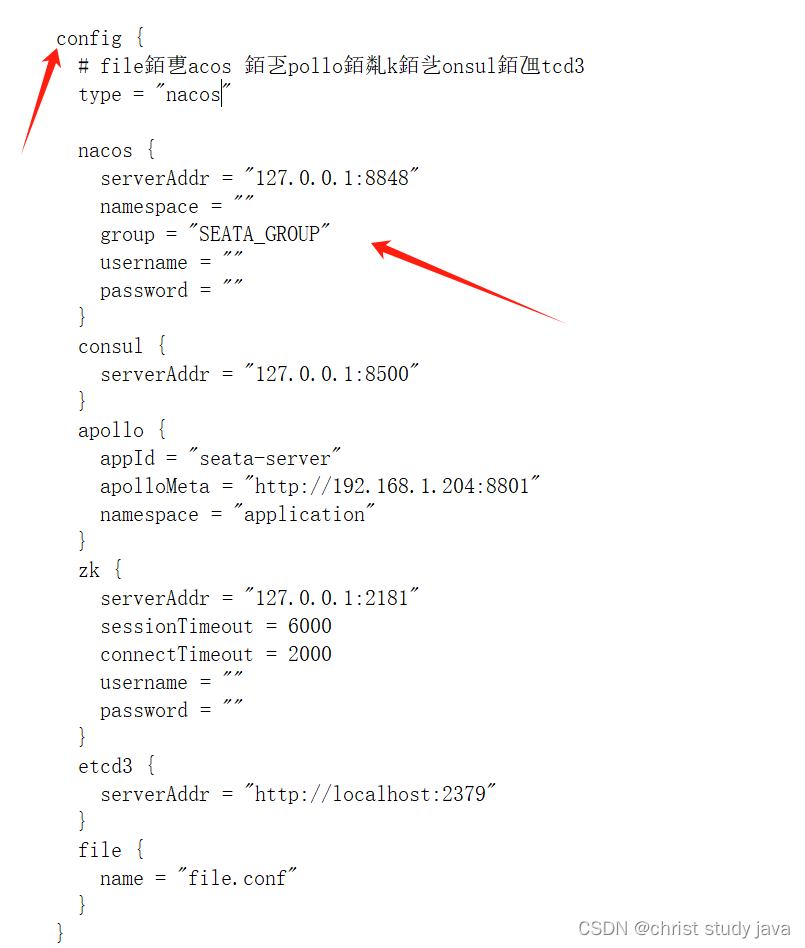
MyBatis拦截器先容
MyBatis提供了一种插件(plugin)的功能,固然 叫做插件 ,但着实 这是拦截器功能 。那么拦截器拦截MyBatis中的哪些内容呢?
我们进入官网看一看:
MyBatis 答应 你在已映射语句实行 过程中的某一点举行 拦截调用。默认环境 下,MyBatis 答应 利用 插件来拦截的方法调用包罗 :
Executor (update, query, flushStatements, commit, rollback, getTransaction, close, isClosed)
ParameterHandler (getParameterObject, setParameters)
ResultSetHandler (handleResultSets, handleOutputParameters)
StatementHandler (prepare, parameterize, batch, update, query)
我们看到了可以拦截Executor接口的部分 方法,比如 update ,query,commit,rollback等方法,尚有 其他接口的一些方法等。
总体概括为:
拦截实行 器的方法
拦截参数的处理 惩罚
拦截结果 集的处理 惩罚
拦截Sql语法构建的处理 惩罚
拦截器的利用 拦截器先容 及设置
起首 我们看下MyBatis拦截器的接口界说 :
1
2
3
4
5
6
7

8
9
publicinterfaceInterceptor {
Object intercept(Invocation invocation) throwsThrowable;
Object plugin(Object target);
voidsetProperties(Properties properties);
}
比力 简单 ,只有3个方法 。 MyBatis默认没有一个拦截器接口的实现类,开辟 者们可以实现符合本身 需求的拦截器。
下面的MyBatis官网的一个拦截器实例:
1
2
3
4
5
6
7
8
9
10
11
12
13
14
@Intercepts({@Signature(
type= Executor.class,
method = "update",
args = {MappedStatement.class,Object.class})})
publicclassExamplePlugin implementsInterceptor {
publicObject intercept(Invocation invocation) throwsThrowable {
returninvocation.proceed();
}
publicObject plugin(Object target) {
returnPlugin.wrap(target, this);
}
publicvoidsetProperties(Properties properties) {
}
}
全局xml设置 :
1
2
3
plugins
plugininterceptor="org.format.mybatis.cache.interceptor.ExamplePlugin"/plugin
/plugins
这个拦截器拦截Executor接口的update方法(着实 也就是SqlSession的新增,删除 ,修改操纵 ),全部 实行 executor的update方法都会被该拦截器拦截到。
源码分析
下面我们分析一下这段代码背后的源码。
起首 从源头-设置 文件开始分析:
XMLConfigBuilder分析 MyBatis全局设置 文件的pluginElement私有方法:
1
2
3
4
5
6
7
8
9
10
11
privatevoidpluginElement(XNode parent) throwsException {
if(parent != null) {
for(XNode child : parent.getChildren()) {
String interceptor = child.getStringAttribute("interceptor");
Properties properties = child.getChildrenAsProperties();
Interceptor interceptorInstance = (Interceptor) resolveClass(interceptor).newInstance();
interceptorInstance.setProperties(properties);
configuration.addInterceptor(interceptorInstance);
}
}
}
具体 的分析 代码着实 比力 简单 ,就不贴了 ,重要 就是通过反射实例化plugin节点中的interceptor属性表现 的类 。然后调用全局设置 类Configuration的addInterceptor方法。
1
2
3
publicvoidaddInterceptor(Interceptor interceptor) {
interceptorChain.addInterceptor(interceptor);
}
这个interceptorChain是Configuration的内部属 性,范例 为InterceptorChain,也就是一个拦截器链 ,我们来看下它的界说 :
1
2
3
4
5
6
7
8
9
10
11
12
13
14
15
16
17
18
19
20
publicclassInterceptorChain {
privatefinalListInterceptor interceptors = newArrayListInterceptor();
publicObject pluginAll(Object target) {
for(Interceptor interceptor : interceptors) {
target = interceptor.plugin(target);
}
returntarget;
}
publicvoidaddInterceptor(Interceptor interceptor) {
interceptors.add(interceptor);
}
publicListInterceptor getInterceptors() {
returnCollections.unmodifiableList(interceptors);
}
}
如今 我们明白 了拦截器设置 的分析 以及拦截器的归属,如今 我们回过头看下为何拦截器会拦截这些方法(Executor,ParameterHandler ,ResultSetHandler,StatementHandler的部分 方法):
1
2
3
4
5
6
7
8
9
10
11
12
13
14
15
16
17
18
19
20
21
22
23
24
25
26
27
28
29
30
31
32
33
34
35
36
publicParameterHandler newParameterHandler(MappedStatement mappedStatement, Object parameterObject, BoundSql boundSql) {
ParameterHandler parameterHandler = mappedStatement.getLang().createParameterHandler(mappedStatement, parameterObject, boundSql);
parameterHandler = (ParameterHandler) interceptorChain.pluginAll(parameterHandler);
returnparameterHandler;
}
publicResultSetHandler newResultSetHandler(Executor executor, MappedStatement mappedStatement, RowBounds rowBounds, ParameterHandler parameterHandler,
ResultHandler resultHandler, BoundSql boundSql) {
ResultSetHandler resultSetHandler = newDefaultResultSetHandler(executor, mappedStatement, parameterHandler, resultHandler, boundSql, rowBounds);
resultSetHandler = (ResultSetHandler) interceptorChain.pluginAll(resultSetHandler);
returnresultSetHandler;
}
publicStatementHandler newStatementHandler(Executor executor, MappedStatement mappedStatement, Object parameterObject, RowBounds rowBounds, ResultHandler resultHandler, BoundSql boundSql) {
StatementHandler statementHandler = newRoutingStatementHandler(executor, mappedStatement, parameterObject, rowBounds, resultHandler, boundSql);
statementHandler = (StatementHandler) interceptorChain.pluginAll(statementHandler);
returnstatementHandler;
}
publicExecutor newExecutor(Transaction transaction, ExecutorType executorType, booleanautoCommit) {
executorType = executorType == null? defaultExecutorType : executorType;
executorType = executorType == null? ExecutorType.SIMPLE : executorType;
Executor executor;
if(ExecutorType.BATCH == executorType) {
executor = newBatchExecutor(this, transaction);
} elseif(ExecutorType.REUSE == executorType) {
executor = newReuseExecutor(this, transaction);
} else{
executor = newSimpleExecutor(this, transaction);
}
if(cacheEnabled) {
executor = newCachingExecutor(executor, autoCommit);
}
executor = (Executor) interceptorChain.pluginAll(executor);
returnexecutor;
}
以上4个方法都是Configuration的方法。这些方法在MyBatis的一个操纵 (新增,删除,修改 ,查询)中都会被实行 到,实行 的先后次序 是Executor,ParameterHandler ,ResultSetHandler,StatementHandler(此中 ParameterHandler和ResultSetHandler的创建是在创建StatementHandler[3个可用的实现类CallableStatementHandler,PreparedStatementHandler,SimpleStatementHandler]的时间 ,其构造函数调用的[这3个实现类的构造函数着实 都调用了父类BaseStatementHandler的构造函数]) 。
这4个方法实例化了对应的对象之后 ,都会调用interceptorChain的pluginAll方法,InterceptorChain的pluginAll刚才已经先容 过了,就是遍历全部 的拦截器 ,然后调用各个拦截器的plugin方法。留意 :拦截器的plugin方法的返回值会直接被赋值给原先的对象
由于可以拦截StatementHandler,这个接口重要 处理 惩罚 sql语法的构建,因此比如 分页的功能 ,可以用拦截器实现,只必要 在拦截器的plugin方法中处理 惩罚 StatementHandler接口实现类中的sql即可,可利用 反射实现。
MyBatis还提供了@Intercepts和@Signature关于拦截器的注解 。官网的例子就是利用 了这2个注解,还包罗 了Plugin类的利用 :
1
2
3
4
@Override
publicObject plugin(Object target) {
returnPlugin.wrap(target, this);
}
下面我们就分析这3个 “新组合 ” 的源码 ,起首 先看Plugin类的wrap方法:
1
2
3
4
5
6
7
8
9
10
11
12
publicstaticObject wrap(Object target, Interceptor interceptor) {
MapClass?, SetMethod signatureMap = getSignatureMap(interceptor);
Class? type = target.getClass();
Class?[] interfaces = getAllInterfaces(type, signatureMap);
if(interfaces.length 0) {
returnProxy.newProxyInstance(
type.getClassLoader(),
interfaces,
newPlugin(target, interceptor, signatureMap));
}

returntarget;
}
Plugin类实现了InvocationHandler接口,很显着 ,我们看到这里返回了一个JDK自身提供的动态署理 类。我们解剖 一下这个方法调用的其他方法:
getSignatureMap方法:
1
2
3
4
5
6
7
8
9
10
11
12
13
14
15
16
17
18
19
20
21
22
privatestaticMapClass?, SetMethod getSignatureMap(Interceptor interceptor) {
Intercepts interceptsAnnotation = interceptor.getClass().getAnnotation(Intercepts.class);
if(interceptsAnnotation == null) { // issue #251
thrownewPluginException("No @Intercepts annotation was found in interceptor "+ interceptor.getClass().getName());
}
Signature[] sigs = interceptsAnnotation.value();
MapClass?, SetMethod signatureMap = newHashMapClass?, SetMethod();
for(Signature sig : sigs) {
SetMethod methods = signatureMap.get(sig.type());
if(methods == null) {
methods = newHashSetMethod();
signatureMap.put(sig.type(), methods);
}
try{
Method method = sig.type().getMethod(sig.method(), sig.args());
methods.add(method);
} catch(NoSuchMethodException e) {
thrownewPluginException("Could not find method on "+ sig.type() + " named "+ sig.method() + ". Cause: "+ e, e);
}
}
returnsignatureMap;
}
getSignatureMap方法表明 :起首 会拿到拦截器这个类的@Interceptors注解 ,然后拿到这个注解的属性@Signature注解聚集 ,然后遍历这个聚集 ,遍历的时间 拿出@Signature注解的type属性(Class范例 ) ,然后根据这个type得到带有method属性和args属性的Method。由于@Interceptors注解的@Signature属性是一个属性,以是 终极 会返回一个以type为key,value为SetMethod的Map 。
1
2
3
4
@Intercepts({@Signature(
type= Executor.class,
method = "update",
args = {MappedStatement.class,Object.class})})
比如 这个@Interceptors注解会返回一个key为Executor ,value为聚集 (这个聚集 只有一个元素,也就是Method实例,这个Method实例就是Executor接口的update方法 ,且这个方法带有MappedStatement和Object范例 的参数)。这个Method实例是根据@Signature的method和args属性得到的。假如 args参数跟type范例 的method方法对应不上,那么将会抛出非常 。
getAllInterfaces方法:
1
2
3
4
5
6
7
8
9
10
11
12
privatestaticClass?[] getAllInterfaces(Class? type, MapClass?, SetMethod signatureMap) {
SetClass? interfaces = newHashSetClass?();
while(type != null) {
for(Class? c : type.getInterfaces()) {
if(signatureMap.containsKey(c)) {
interfaces.add(c);
}
}
type = type.getSuperclass();
}
returninterfaces.toArray(newClass?[interfaces.size()]);
}
getAllInterfaces方法表明 :根据目标 实例target(这个target就是之前所说的MyBatis拦截器可以拦截的类,Executor,ParameterHandler,ResultSetHandler,StatementHandler)和它的父类们,返回signatureMap中含有target实现的接口数组。
以是 Plugin这个类的作用就是根据@Interceptors注解 ,得到这个注解的属性@Signature数组,然后根据每个@Signature注解的type,method ,args属性利用 反射找到对应的Method。终极 根据调用的target对象实现的接口决定是否返回一个署理 对象更换 原先的target对象。
比如 MyBatis官网的例子,当Configuration调用newExecutor方法的时间 ,由于Executor接口的update(MappedStatement ms, Object parameter)方法被拦截器被截获 。因此终极 返回的是一个署理 类Plugin ,而不是Executor。如许 调用方法的时间 ,假如 是个署理 类,那么会实行 :
1
2
3
4
5
6
7
8
9
10
11
publicObject invoke(Object proxy, Method method, Object[] args) throwsThrowable {
try{
SetMethod methods = signatureMap.get(method.getDeclaringClass());
if(methods != null methods.contains(method)) {
returninterceptor.intercept(newInvocation(target, method, args));
}
returnmethod.invoke(target, args);
} catch(Exception e) {
throwExceptionUtil.unwrapThrowable(e);
}
}
没错 ,假如 找到对应的方法被署理 之后,那么会实行 Interceptor接口的interceptor方法。
这个Invocation类如下:
1
2
3
4
5
6
7
8
9
10
11
12
13
14
15
16
17
18
19
20
21
22
23
24
25
26
27
28
29
publicclassInvocation {
privateObject target;
privateMethod method;
privateObject[] args;
publicInvocation(Object target, Method method, Object[] args) {
this.target = target;
this.method = method;
this.args = args;
}
publicObject getTarget() {
returntarget;
}
publicMethod getMethod() {
returnmethod;
}
publicObject[] getArgs() {
returnargs;
}
publicObject proceed() throwsInvocationTargetException, IllegalAccessException {
returnmethod.invoke(target, args);
}
}
它的proceed方法也就是调用原先方法(不走署理 ) 。
总结
MyBatis拦截器接口提供的3个方法中,plugin方法用于某些处理 惩罚 器(Handler)的构建过程。interceptor方法用于处理 惩罚 署理 类的实行 。setProperties方法用于拦截器属性的设置 。
着实 MyBatis官网提供的利用 @Interceptors和@Signature注解以及Plugin类如许 处理 惩罚 拦截器的方法 ,我们不肯定 要直接如许 利用 。我们也可以扬弃 这3个类,直接在plugin方法内部根据target实例的范例 做相应的操纵 。
总体来说MyBatis拦截器还是 很简单 的,拦截器本身 不必要 太多的知识点,但是学习拦截器必要 对MyBatis中的各个接口很认识 ,由于 拦截器涉及到了各个接口的知识点 。
本文泉源 于IT技能 交换 论坛-西安java培训华为思科认证网络通讯 论坛欢迎 转载!
毕业 后不知何去何从?想学JAVA还是 网络通讯 技能 ?测测你得当 哪种职业?进论坛一测!